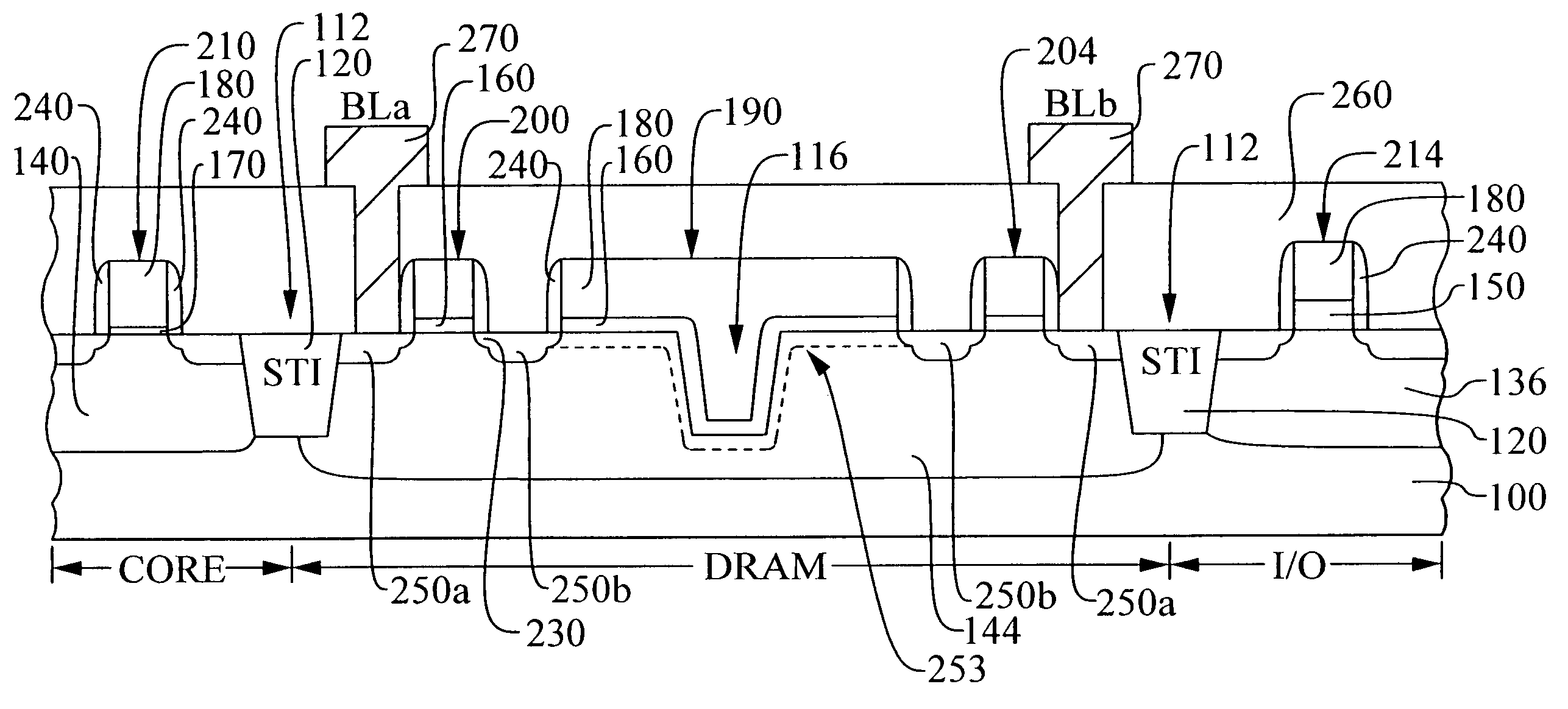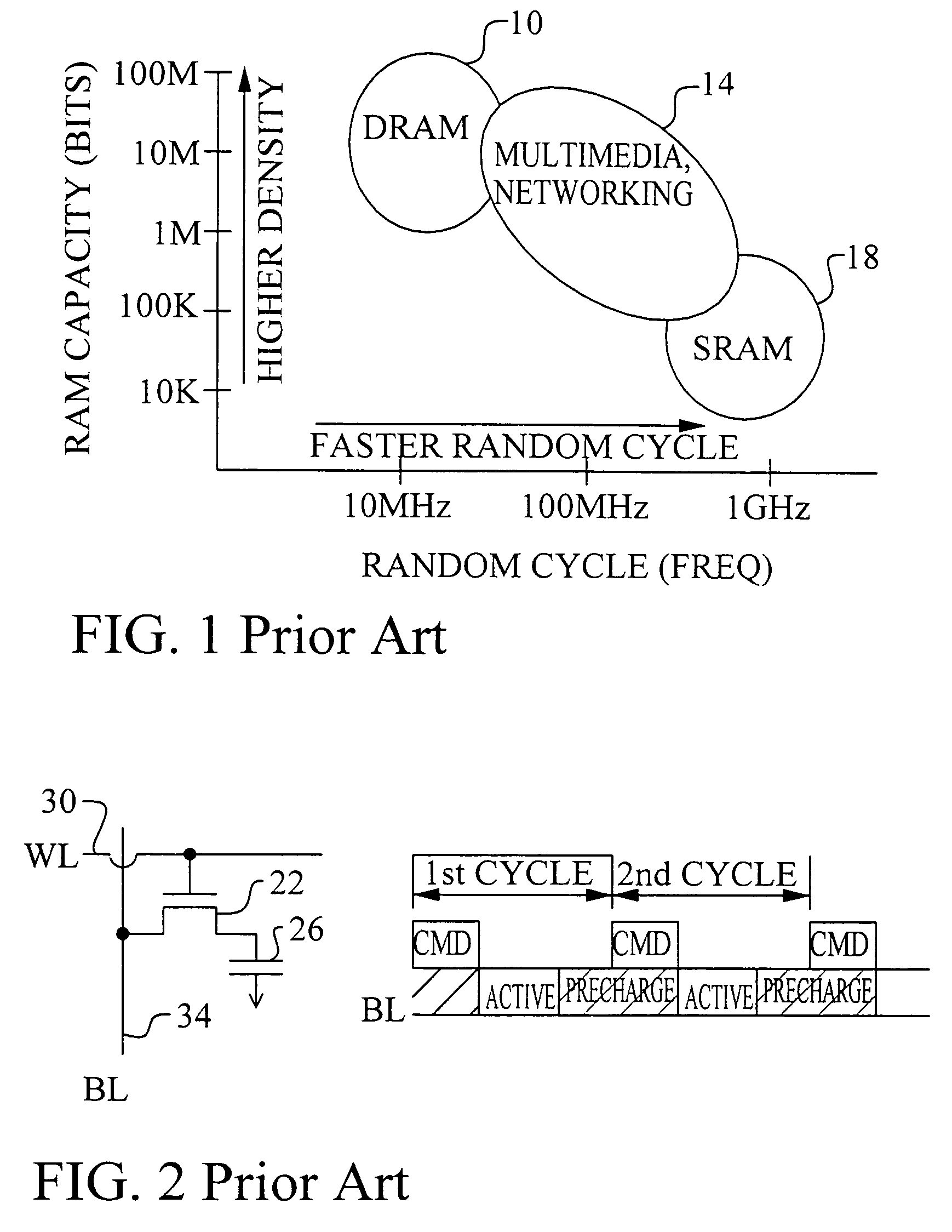Embedded dual-port DRAM process
a dual-port dram and process technology, applied in the direction of semiconductor devices, electrical equipment, transistors, etc., can solve the problems of limiting the capacity of dram technologies to about 1 mbit, and the random access operation speed of dram technologies is limited
- Summary
- Abstract
- Description
- Claims
- Application Information
AI Technical Summary
Benefits of technology
Problems solved by technology
Method used
Image
Examples
Embodiment Construction
[0025]The preferred embodiments of the present invention disclose a method to form dual-port DRAM cells. The method integrates a unique dual-port DRAM fabrication into a standard CMOS process. It should be clear to those experienced in the art that the present invention can be applied and extended without deviating from the scope of the present invention.
[0026]Referring now to FIGS. 4 through 19, the preferred embodiment of the present invention is illustrated. Many important features of the present invention are shown and discussed below. The preferred embodiment discloses a method to form dual-port DRAM cells in a standard CMOS process. Referring again particularly to FIG. 4, a substrate 100 is provided. The substrate 100 preferably comprises a semiconductor material and, more preferably, comprises monocrystalline silicon. In a process sequence that is typical of widely practice CMOS technology, a pad oxide layer 104 is formed on the substrate wafer 100. Typically, this pad oxide ...
PUM
 Login to View More
Login to View More Abstract
Description
Claims
Application Information
 Login to View More
Login to View More - R&D
- Intellectual Property
- Life Sciences
- Materials
- Tech Scout
- Unparalleled Data Quality
- Higher Quality Content
- 60% Fewer Hallucinations
Browse by: Latest US Patents, China's latest patents, Technical Efficacy Thesaurus, Application Domain, Technology Topic, Popular Technical Reports.
© 2025 PatSnap. All rights reserved.Legal|Privacy policy|Modern Slavery Act Transparency Statement|Sitemap|About US| Contact US: help@patsnap.com



